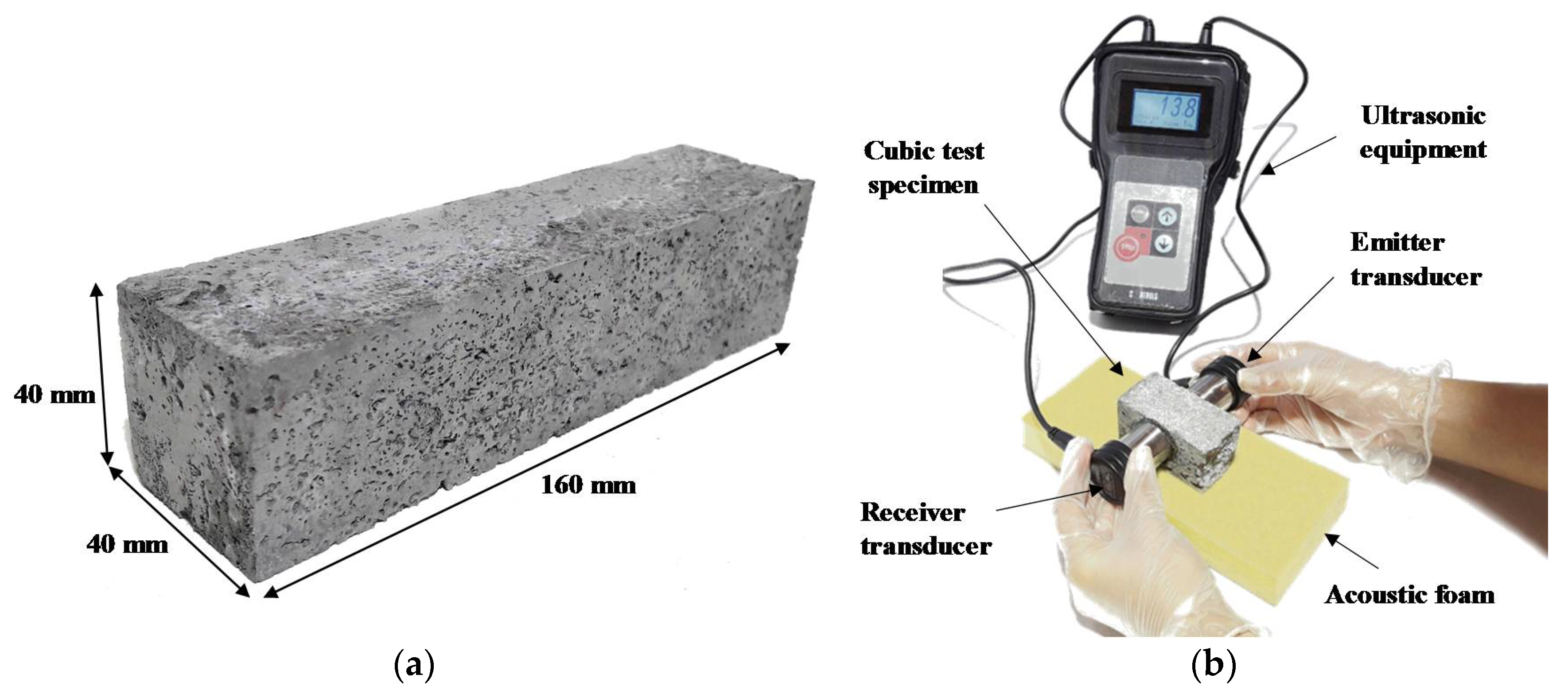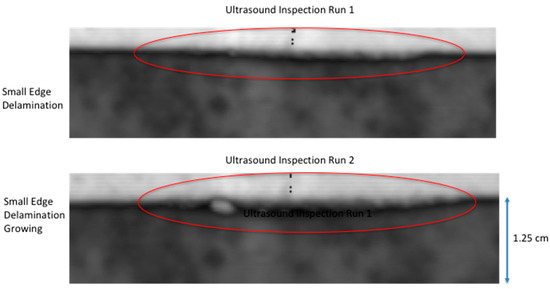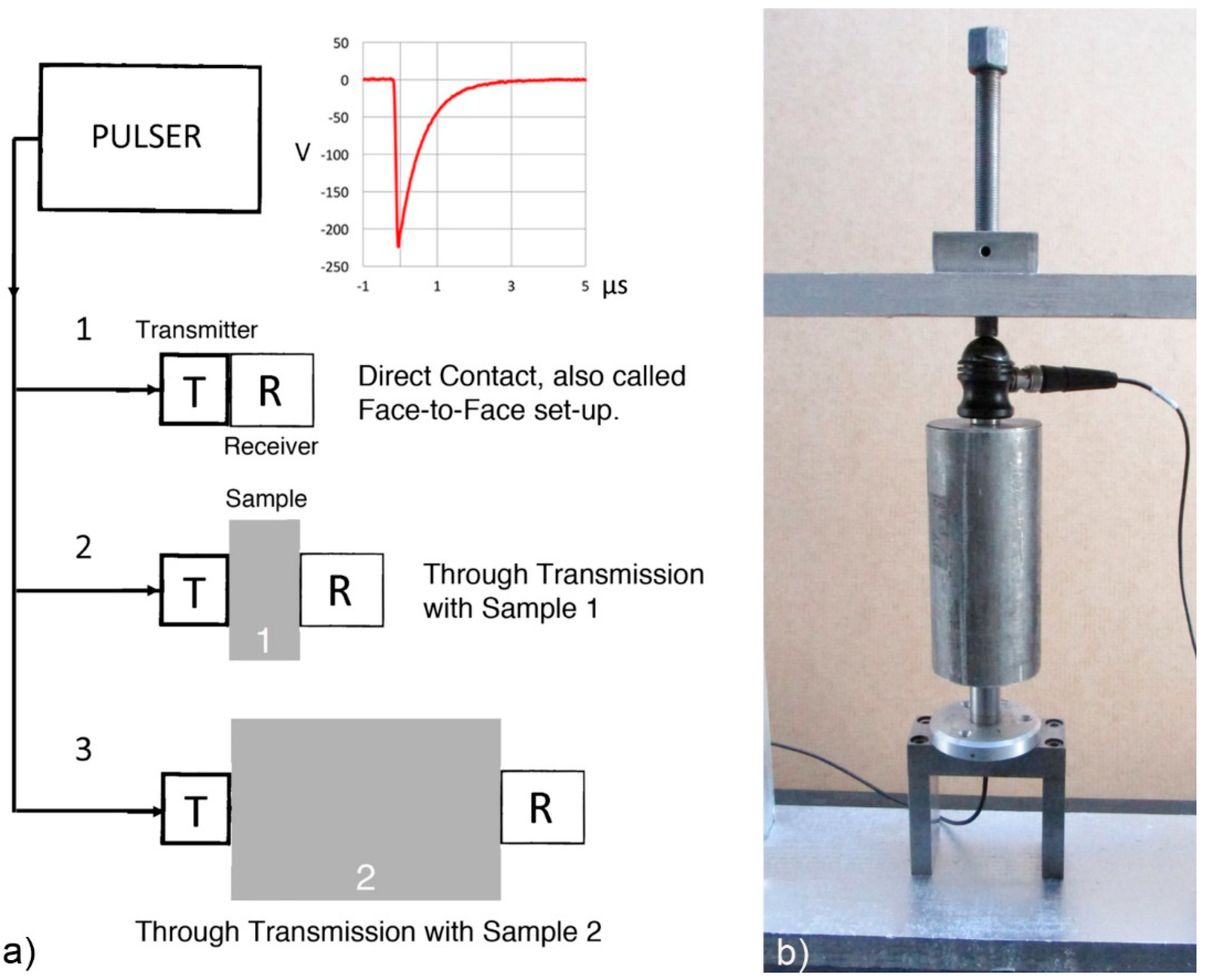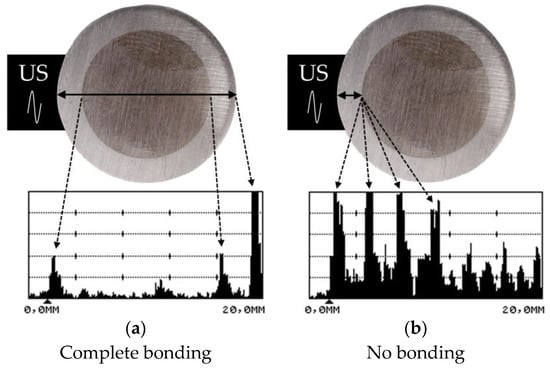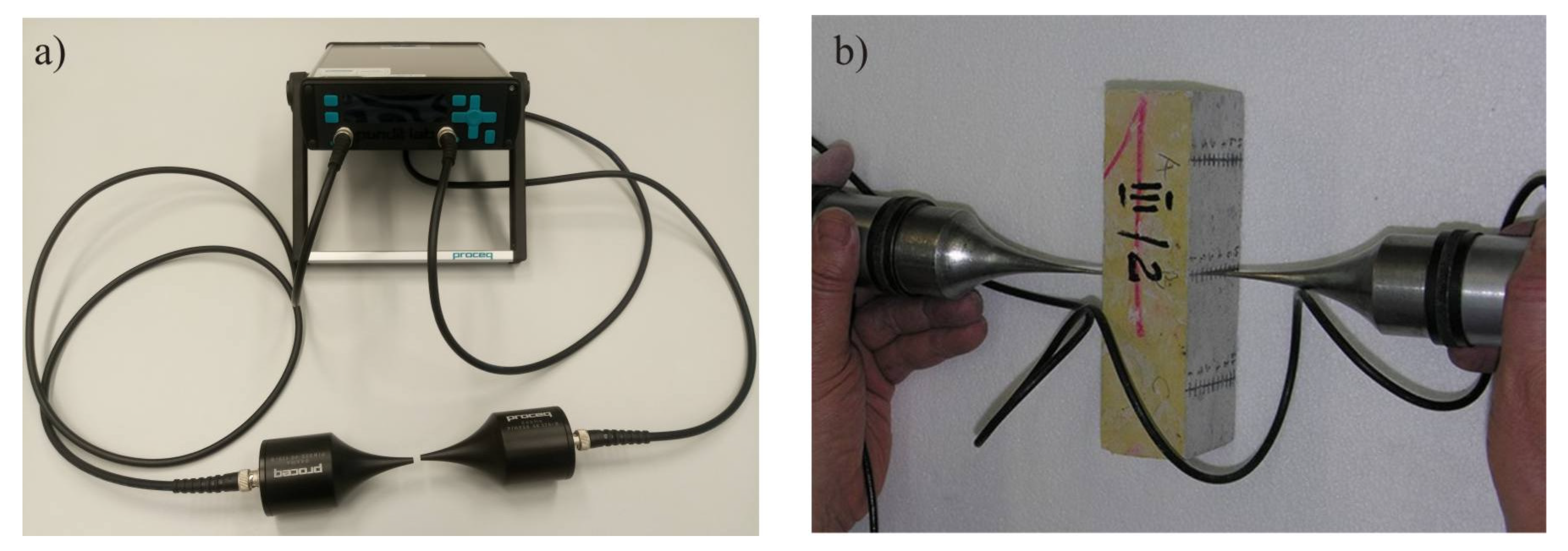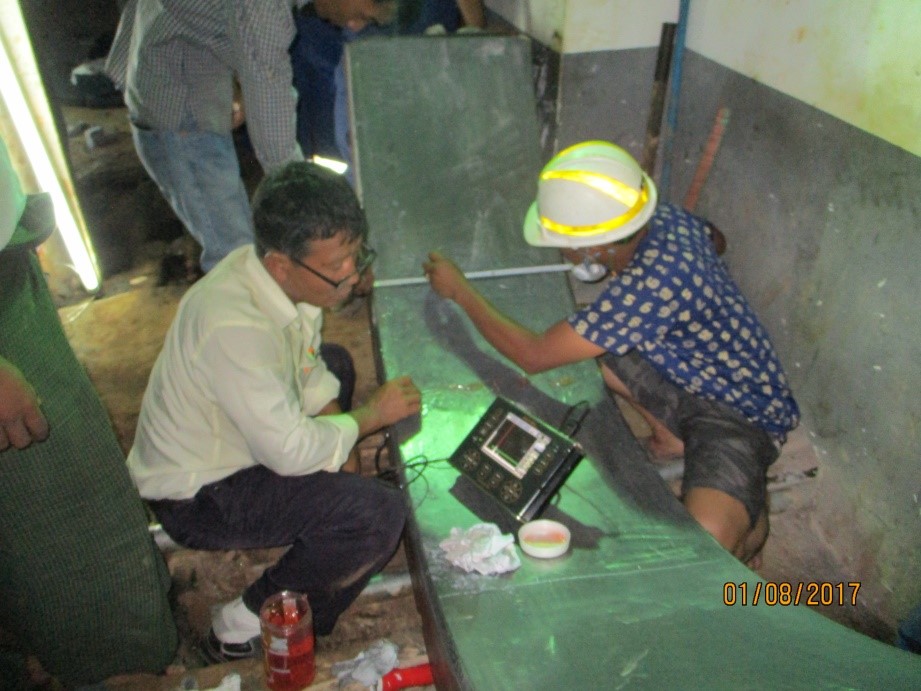The upv methods have traditionally been used for the quality control of materials mostly homogeneous materials such as metals and welded connections.
Ultrasonic testing of non metallic materials concrete and marble.
Examined in the work are construction materials such as concrete and marble.
Similar work has been done by vardoulakis 2 and the values obtained.
In particular the dynamic moduli of elasticity and damage states due to fracture are studied.
Elasticity moduli shear moduli and poisson ratio of marbles and concrete have been determined by ultrasonic waves under varied pressure 1.
None of the available non destructive methods for testing concrete and marble seem to provide a better answer.
The present experimental work will examine the behavior of a 30 year old concrete and a dionysos pentelikon marble using destructive as well as the ultrasonic non destructive testing methods.
Among the known methods the ultrasonics seem to stand out because the method could be used to determine many properties of the material.
Ultrasonic testing of marbles has been examined by several researchers 1 6.
The ultrasonic method can be applied to specimens for new construction and for in situ examination using longitudinal ultrasonic waves.
As ultrasonic wave velocity is sensitive to microstructural factors such as microcracks and porosity it has been widely used to evaluate the microstructural state of solid materials e g.
Among the known methods the ultrasonics seem to stand out because the method could be used to determine many properties of the material.
Examined in the work are construction materials such as concrete and marble.
C 2004 elsevier ltd.








